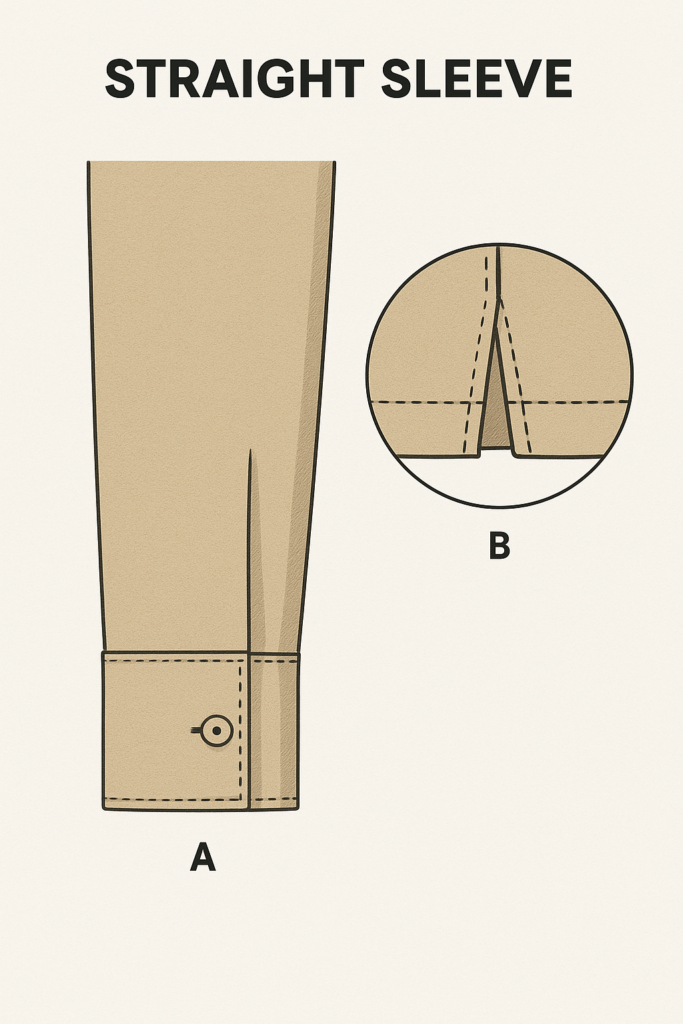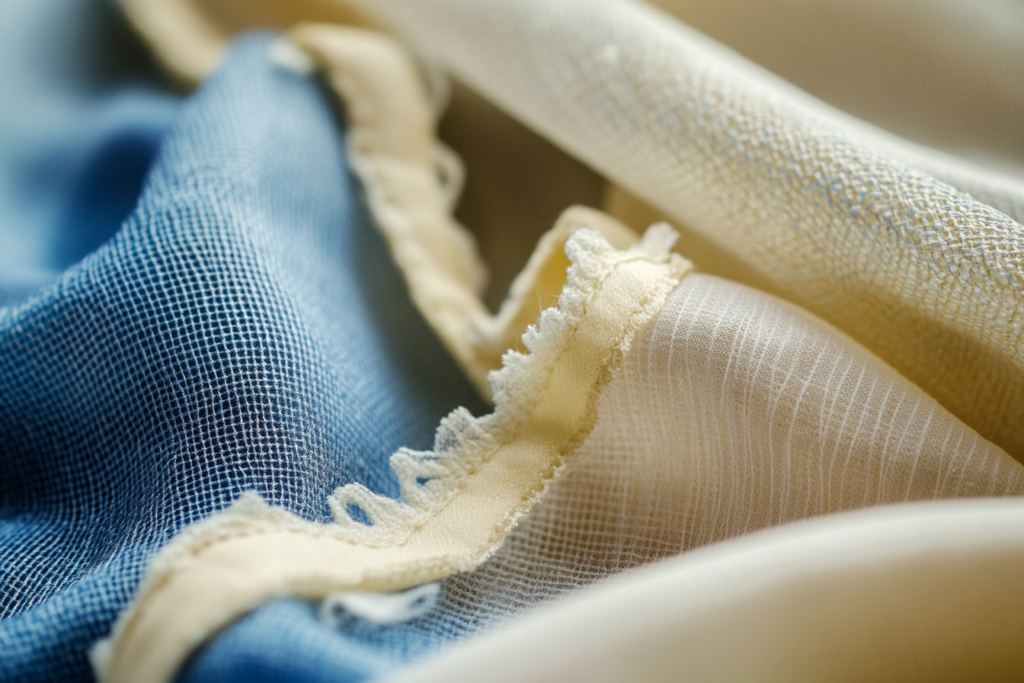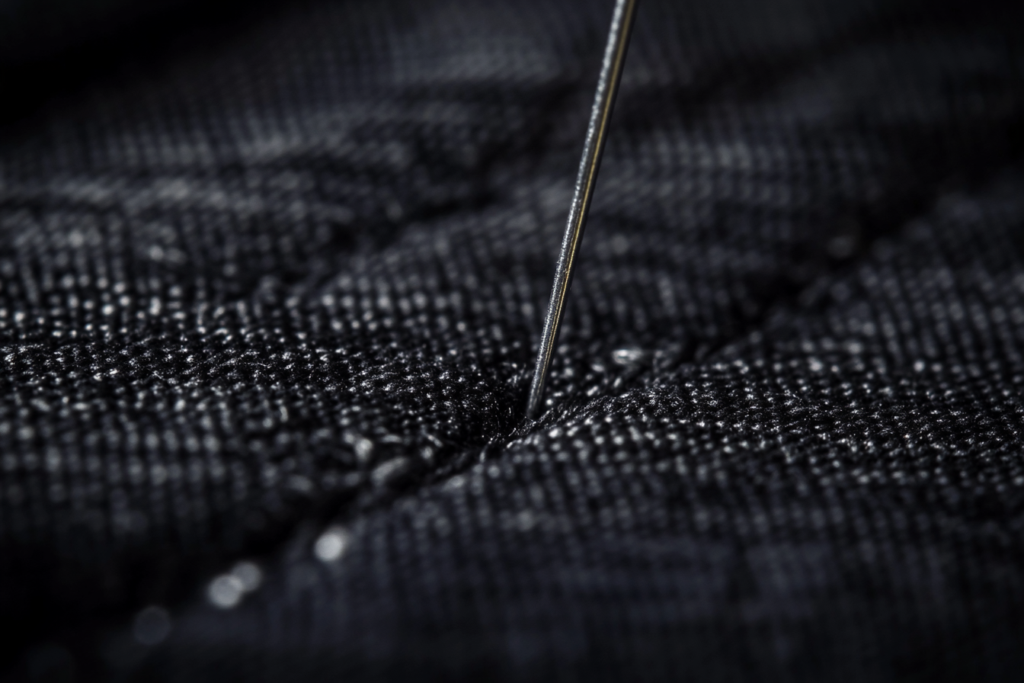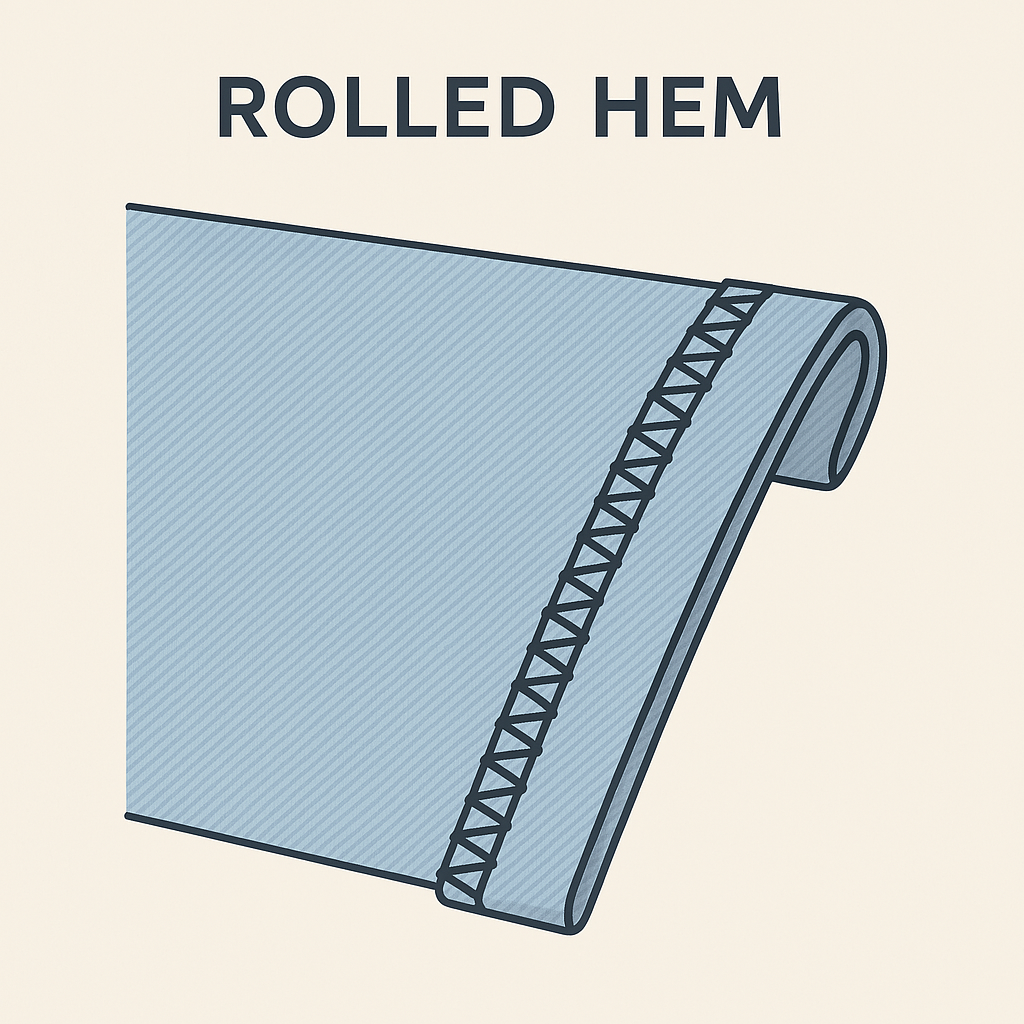Straight Sleeve in Garment Construction: Structure, Cuffs & Seam Considerations
🧵 What Is a Straight Sleeve?
A Straight Sleeve is a classic sleeve style where the sleeve tapers very little—or not at all—from the armhole to the cuff. It’s commonly used in structured garments or those made from heavy fabrics, where volume and rigidity are desired over flexibility.
This sleeve includes a cuff detail, often accompanied by a stitched slit opening for adjustability and wearability.
✂️ Construction Features of the Straight Sleeve
🔸 Cuff Integration
- The cuff circumference and height are standardized based on pattern measurements and listed in the garment’s data table, so they are not illustrated in full detail.
- The sleeve and cuff are designed to form a clean, angular line when viewed from the front (surface view).
- Ideal for heavier fabrics like canvas, denim, or wool, where a straighter silhouette complements the garment structure.
🔸 Sleeve Slit & Crossover Detail
- The slit at the sleeve opening allows entry and exit of the hand, often held closed with a button or snap.
- The crossover finish shown in the detail view includes the exposed slit seam, which must be clean and reinforced.
- Not suitable for fabrics that fray easily, as this style requires precise edge stitching without fraying.
🧷 For lightweight or unravel-prone fabrics, a bound placket or faced slit is more appropriate.
👗 Garment Application Table for Straight Sleeves
| Garment Type | Sleeve Style | Cuff Finish | Slit Construction | Best Suited Fabric |
|---|---|---|---|---|
| Heavy Work Jacket | Straight Sleeve | Buttoned Cuff | Exposed slit seam | Canvas, Twill, Duck Cloth |
| Denim Shirts | Straight Sleeve | Folded Cuff | Basic slit | Midweight Denim |
| Winter Coats | Straight Sleeve | Wide Reinforced | Overlap or slit | Wool, Melton |
| Casual Blouses | Modified Straight | Soft Roll Hem | None or faux slit | Linen, Midweight Cotton |
🔧 Key Sewing Tips
- Reinforce slit edges with stay stitching or interfacing to prevent warping
- Use clean topstitching on the crossover for visible areas
- Always check cuff measurements in the tech pack—they’re often standardized
- Avoid raw edges on slit seams unless working with non-fraying fabrics
🌟 Benefits of the Straight Sleeve
✔️ Provides a structured, classic silhouette
✔️ Pairs well with heavier fabrics that hold shape
✔️ Clean finish at the cuff, especially when stitched well
✔️ Less tapering makes it easier to construct and align
📌 Summary
The Straight Sleeve is a foundational sleeve design used in outerwear, workwear, and sturdy tops. It’s characterized by its uniform width, buttoned or reinforced cuff, and a simple crossover slit at the wrist. While elegant in structure, this design requires strong, non-fraying fabrics and precise stitching to achieve a clean, functional result. When used effectively, the straight sleeve provides a balanced mix of utility and style.




